Plantar Fasciitis
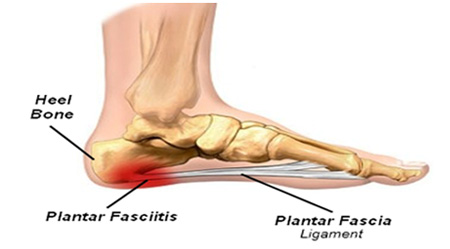 Plantar fasciitis is the most common cause of heel pain in the age group of 40 to 60 years Plantar fasciitis has been reported in patients aged 7 to 85 years. It is mostly unilateral, but in one third of the cases, it could be bilateral. Thickness of this heel pad decreases after the age of 40 years, so plantar fasciitis is more common after that age. It is also more common in women.
Plantar fasciitis is the most common cause of heel pain in the age group of 40 to 60 years Plantar fasciitis has been reported in patients aged 7 to 85 years. It is mostly unilateral, but in one third of the cases, it could be bilateral. Thickness of this heel pad decreases after the age of 40 years, so plantar fasciitis is more common after that age. It is also more common in women.
The pain in plantar fasciitis is located at the medial tubercle of the calcaneus, which is the origin of the plantar fascia. It is tender to palpation.
Patients report gradually worsening heel pain. The pain is noticeably worse on awakening in the morning. This pain eases after taking a few steps, decreases through the day, and gets worse toward the end of the day. The pain also worsens with prolonged standing. Rest in the evening produces pain relief.
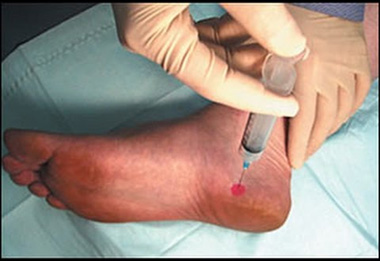 Injection technique
Injection technique
Achilles Tendinitis
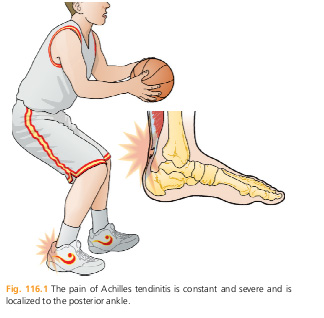 Tendinitis of the Achilles tendon is characterized by activity-related pain, swelling, tenderness, and sometimes crepitus over the tendon 2 to 6 cm from its insertion
Tendinitis of the Achilles tendon is characterized by activity-related pain, swelling, tenderness, and sometimes crepitus over the tendon 2 to 6 cm from its insertion
Corticosteroid injections in or near the tendon may predispose to tendon rupture and are therefore strongly discouraged.
Retrocalcaneal, Sub-Achilles, or Subtendinous Bursitis
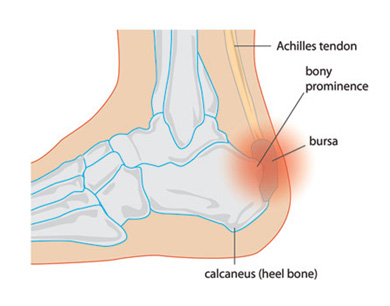 Retrocalcaneal bursitis is associated with posterior heel pain that is aggravated by passive dorsiflexion of the ankle.
Retrocalcaneal bursitis is associated with posterior heel pain that is aggravated by passive dorsiflexion of the ankle.
It is often worse in the beginning of an activity, such as walking and running, and diminishes as the activity continues.
Patients may present with complain of unable to wear shoes comfortably.
Symptoms seem to improve on weekends and during vacations. Patients may develop a limp, and wearing shoes can become more painful
Metatarsalgia
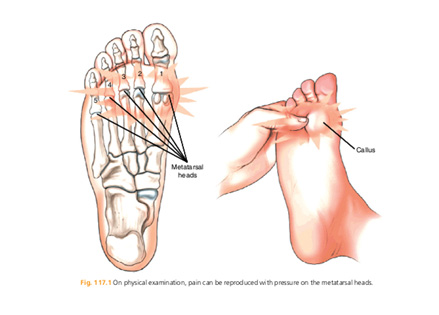 Metatarsalgia, or pain and tenderness in and about the metatarsal heads or metatarsophalangeal (MTP) joints.
Metatarsalgia, or pain and tenderness in and about the metatarsal heads or metatarsophalangeal (MTP) joints.
Metatarsalgia may either be limited to a single joint or generalized across the ball of the foot.
The main clinical findings are pain in the forefoot on standing and walking and tenderness on palpation of the metatarsal heads and MTP joints